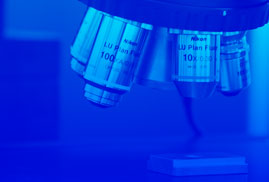In High Temperature Superconductors (where the system considered in this thesis, YBa2Cu3O7 is included), the motion of the magnetic flux lines (vortex) present in the sample is strongly enhanced by the high temperatures of operation of these superconducting materials. The motion of these vortices generates dissipation in the form of an electrical resistance
Furthermore, different interactions act over vortices, thus modifying their dynamic behavior. In particular, it is worth to mention the repulsive vortex-vortex interaction and the influence of microstructural defects where the superconducting properties are suppressed. These microstructural defects may, under certain circumstances, act as preferential sites for vortices, and thus, become pinning centers improving the superconducting properties. The study of the influence of the defects in textured samples of YBa2Cu3O7, where a high density of defects exists, is the goal of this thesis.
This study has required the study of samples with microstructural characteristics clearly differentiated and systematic measurements capable to distinguish the effects of each one of the main defects. The main results of this work are:
1.- The system YBa2Cu3O7 has been compared with similar systems: NdBa2Cu3O7 and the influence of Mg doping YBa2(Cu1-xMgx)3O7. The influence of doping in the anisotropy has been considered to investigate the evolution of the phase diagram with the content of Mg.
We have studied the superconducting properties of a clean single crystals, in order to compare these results with those obtained in textured samples with a high diversity of defects.
We have determined and quantized the influence of the main pinning centers present in textured samples. We have seen:
A widening of the vortex solid state when vortices are parallel to the pinning centers. This phenomenon has been observed in planar defects (twin boundaries) and linear defects (in plane dislocations). It has also been observed a widening of the solid state due to the inclusions of Y2BaCuO5 spherical particles for all the directions of the magnetic field, thus demonstrating that they act as linear pinning centers for a length of the order of their radius
3.2.- That point-like pinning centers are not capable to modificate the position of the solid-liquid transition in the magnetic phase diagram.
We have also determined the influence of certain microstructural defects (microcracks and stacking faults) leading to a reduction in the vortex correlation along the direction of the magnetic field, promoting a widening of the vortex liquid state, thus demonstrating that microstructural defects also may have detrimental effects on vortex pinning.
The influence of the different microstructural defects in samples with a high degree of microstructural complexity has been compared with the results obtained in the literature in clean samples and the theoretical models existing in samples with a low density of defects.
Finally, this study of the influence of defects on vortex dynamics in textured YBa2Cu3O7 has enabled to determine the existence of a new transition in the system YBa2Cu3O7 where the vortex line tension is lost.


